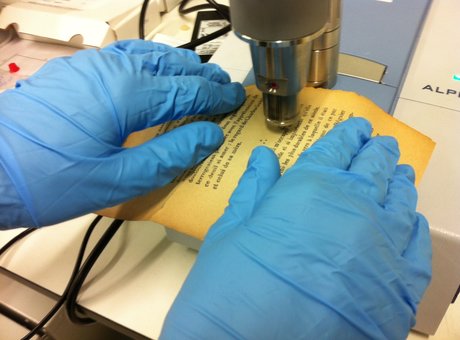A study of degradation of historic parchment

1 January 2012
Parchment has been in use for thousands of years and has been used as the writing or drawing support for many important historic works. A variety of analytical techniques is currently used for routine assessment of the degree of denaturation of historic parchment; however, because parchment has a heterogeneous nature, analytical methods with high spatial resolution are desirable. In this work, the use of small-angle X-ray scattering (SAXS) and synchrotron-IR (SR-IR) was examined in conjunction with multivariate data analysis to study degradation of an extended set of historic parchment samples, and particularly to investigate the effect of lipids and the presence of iron gall ink on the degradation processes. In the data analysis, shrinkage temperature, lipid content, sample age, presence of ink and accelerated degradation were included. The analysis of loading factors in partial least-squares regression and principal component analyses based on SAXS, SR-IR and other analytical and descriptive data reveals the effect of lipid removal on diffraction patterns, and lipids are found to cause the degradation process in parchment to accelerate. The effect of iron gall ink is also evident, although the mechanism of ageing is different to that of natural ageing in the absence of ink. In addition, a historic parchment score from ca. 1750 is examined, demonstrating the significant effect of iron gall ink, and lipids and inorganic soiling on its increased degradation.
A study of degradation of historic parchment using small-angle X-ray scattering, synchrotron-IR and multivariate data analysis. Analytical and Bioanalytical Chemistry, 402 (4), 1559-1566.
Možir, A., Kralj Cigić, I., Gonzalez, L., Wess, T.J., Rabin, I., Hahn, O., Strlic, M. (2012)
 Close
Close

